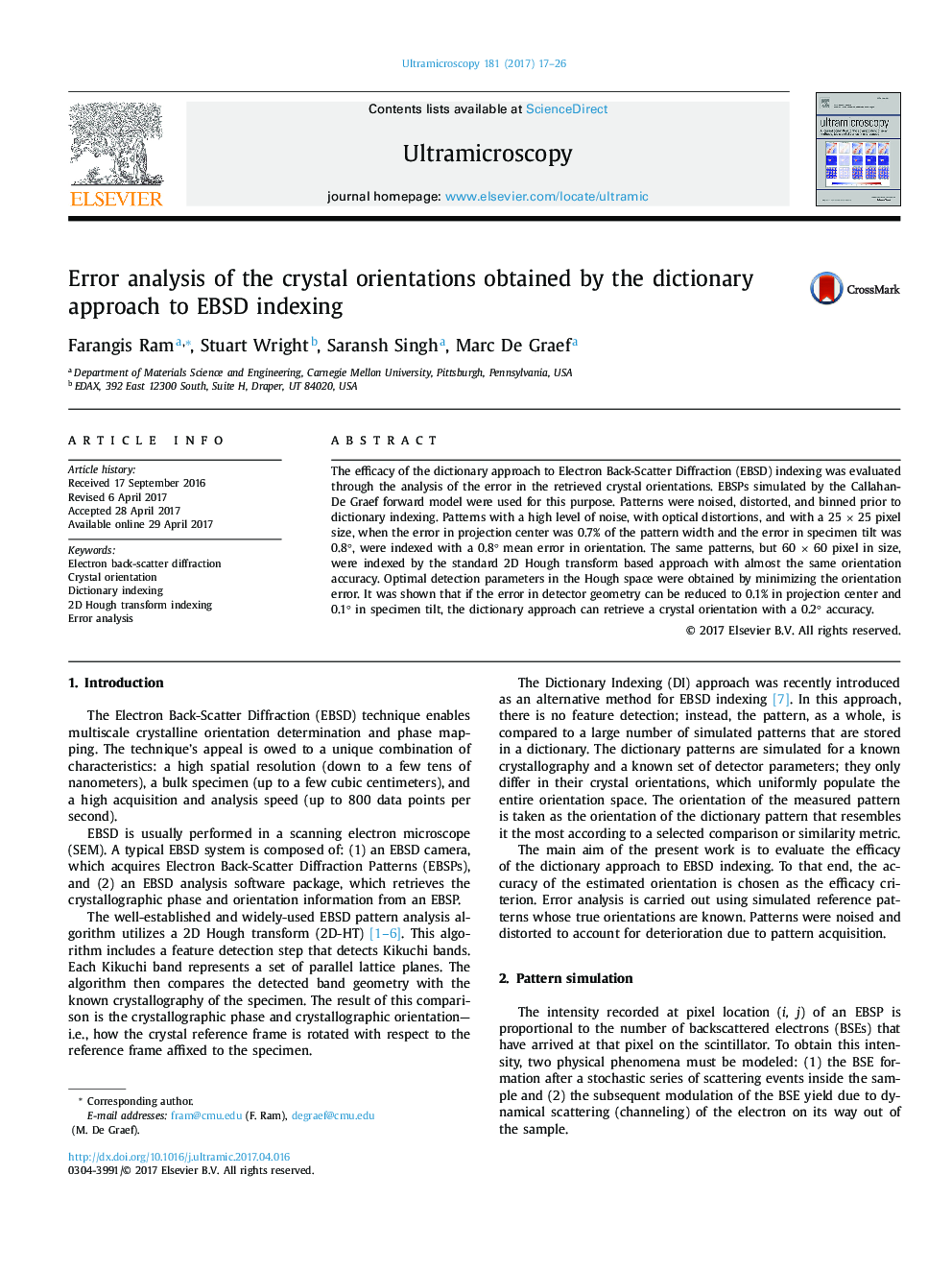| Article ID | Journal | Published Year | Pages | File Type |
|---|---|---|---|---|
| 5466651 | Ultramicroscopy | 2017 | 10 Pages |
Abstract
The efficacy of the dictionary approach to Electron Back-Scatter Diffraction (EBSD) indexing was evaluated through the analysis of the error in the retrieved crystal orientations. EBSPs simulated by the Callahan-De Graef forward model were used for this purpose. Patterns were noised, distorted, and binned prior to dictionary indexing. Patterns with a high level of noise, with optical distortions, and with a 25 à 25 pixel size, when the error in projection center was 0.7% of the pattern width and the error in specimen tilt was 0.8°, were indexed with a 0.8° mean error in orientation. The same patterns, but 60 à 60 pixel in size, were indexed by the standard 2D Hough transform based approach with almost the same orientation accuracy. Optimal detection parameters in the Hough space were obtained by minimizing the orientation error. It was shown that if the error in detector geometry can be reduced to 0.1% in projection center and 0.1° in specimen tilt, the dictionary approach can retrieve a crystal orientation with a 0.2° accuracy.
Related Topics
Physical Sciences and Engineering
Materials Science
Nanotechnology
Authors
Farangis Ram, Stuart Wright, Saransh Singh, Marc De Graef,
